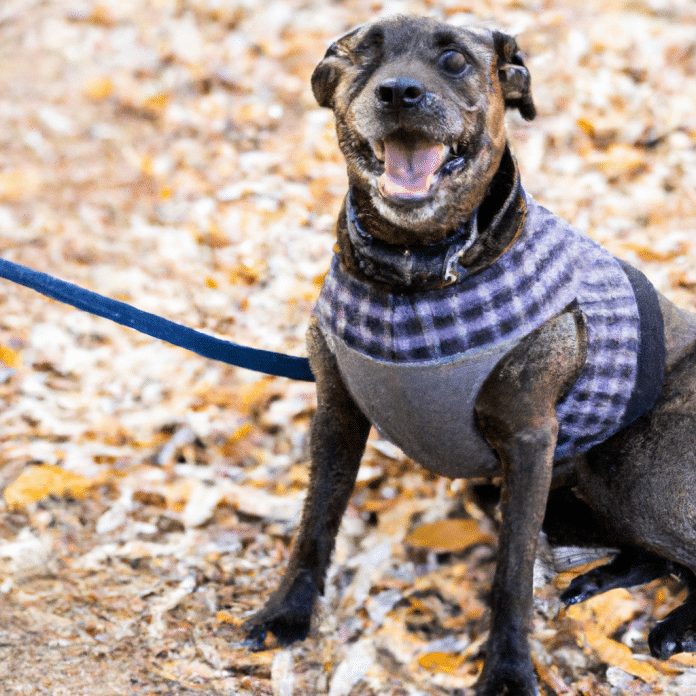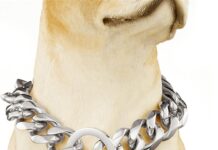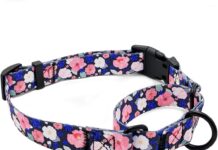In our quest to find the most effective tool for walking our beloved dogs, we often face the age-old dilemma: slip lead or harness?
As pet owners, we want the best for our furry friends, ensuring their comfort, safety, and happiness.
In this article, we will explore the pros and cons of the slip lead and harness, ultimately uncovering which one reigns supreme in providing the ideal walking experience for both the pet and the owner.
So, let’s put these two contenders to the test and discover which leash accessory is genuinely the top dog!
Benefits of Slip Leads
Control and Communication
One of the main benefits of using a slip lead is the control and communication it provides between the dog and the handler. Slip leads are designed to tighten around the dog’s neck when tension is applied, giving the handler immediate feedback and control over the dog’s movements. The slip lead allows quick and effective corrections, beneficial for training and behavior modification.
Easy to Use
Slip leads are simple and easy to use, even for those new to dog handling. The design consists of a loop that can easily be slipped over the dog’s head and adjusted to the appropriate size. This makes it a convenient choice for quick walks or outings where a secure leash is needed without the hassle of complex buckles or attachments.
Versatility
Another advantage of slip leads is their versatility. They can be used with dogs of all sizes and breeds, making them popular for small and large dog owners. Slip leads are also suitable for various activities such as obedience training, agility training, and daily walks. Their adaptability to different scenarios makes them a practical choice for many dog owners.
Greater Control for Strong Pullers
Slip leads can increase control for dogs that tend to pull on the leash. When pressure is applied to the leash, the slip lead tightens, discouraging the dog from pulling and keeping them by the handler’s side. This added control benefits the dog’s safety and the handler’s comfort, especially when dealing with larger, muscular breeds.
Drawbacks of Slip Leads
Potential for Choking or Injury
While slip leads can be practical tools, they do come with certain risks. If not used correctly or if excessive force is applied, there is a potential for choking or injury to the dog’s neck. It is essential to use caution when using a slip lead and regularly monitor the dog’s comfort and well-being during walks or training sessions.
Less Comfortable for Dogs
Some dogs may find slip leads less comfortable compared to harnesses. The constant pressure around their necks, even when not pulling, can be uncomfortable and restrict their natural range of motion. Considering an individual dog’s comfort and well-being is crucial when deciding between a slip lead and a harness.
Requires Proper Technique
Using a slip lead effectively requires proper technique and handling skills. Understanding how to apply the appropriate amount of pressure and release it when necessary is crucial. Without a clear understanding of the correct technique, there is a risk of causing discomfort or injury to the dog and compromising the effectiveness of the leash.
Benefits of Harnesses
Reduced Strain on Neck and Throat
One of the primary benefits of using a harness is the reduced strain it places on the dog’s neck and throat. Unlike slip leads, which tighten around the neck, harnesses distribute pressure evenly across the dog’s chest and back. This can be particularly advantageous for dogs with neck or throat sensitivities, preventing potential injuries or discomfort.
Even the Distribution of Pressure
Harnesses provide a more even pressure distribution on the dog’s body than slip leads, which mainly focus on the neck area. This helps to minimize the chances of the dog feeling uncomfortable or in pain, especially during more rigorous activities such as running or hiking.
Added Safety Features
Many harnesses on the market today come with additional safety features, such as reflective strips or integrated handles. These features enhance visibility during nighttime walks and allow for better emergency control. By opting for a harness with these added safety features, dog owners can ensure the well-being and security of their furry companions.
Suitable for Brachycephalic Breeds
Brachycephalic breeds, such as Bulldogs or Pugs, have unique anatomical features that make slip leads potentially harmful. These breeds have shorter muzzles and may already experience breathing difficulties. Harnesses provide a safer alternative for these dogs, reducing the risk of further discomfort or respiratory distress.
Drawbacks of Harnesses
Potential for Escape
Depending on the design and fit, some dogs may find a way to escape from a harness. This can be particularly problematic for highly energetic or Houdini-like dogs skilled at wriggling out of restraints. Choosing a harness with a secure and adjustable fit is crucial to minimize the risk of escape.
Restricted Movement
While harnesses provide a more comfortable option for dogs, they can also somewhat restrict a dog’s natural movement. The proper fit and design of the harness are essential to ensure that the dog still has the freedom to move and perform most activities comfortably. Consider a harness with adjustable straps that allow for a snug fit without restricting the dog’s range of motion.
Less Control for Pullers
Strong pullers may not be easily controlled with a harness alone. Unlike slip leads that have a tightening mechanism, harnesses rely on distributing pressure across the body. Some dogs, especially those with a strong instinct to pull or a high prey drive, may require additional training or tools to manage their pulling behavior effectively.
Choosing the Right Option
Consider the Dog’s Behavior and Needs
When deciding between a slip lead and a harness, it’s crucial to consider the dog’s behavior, size, and specific needs. A slip lead may be a suitable choice if the dog tends to pull or requires more control during walks. However, if the dog has neck or throat sensitivities or is prone to escaping restraints, a harness might be safer and more comfortable.
Consult with a Professional
If you’re unsure which option is best for your dog, consulting with a professional dog trainer or veterinarian is always helpful. They can assess your dog’s needs and provide tailored recommendations based on their expertise and experience. Professional guidance ensures a better understanding of your dog’s unique requirements and increases the chances of making the most suitable choice.
Trial and Error
Ultimately, every dog is different; what works well for one may not work for another. Finding the right option for your furry companion may take some trial and error. Observing the dog’s behavior, comfort level, and response to different leash styles will help guide you toward the most effective choice for your dog’s well-being and peace of mind.
Using Slip Leads Effectively
Proper Placement and Fit
Ensuring proper placement and fit is essential to use a slip lead effectively. The slip lead should sit high on the dog’s neck, just behind the ears, with enough space to slip a few fingers between the leash and the dog’s neck. This allows for a secure yet comfortable fit that provides control without causing discomfort or injury.
Training and Positive Reinforcement
To make the most of a slip lead, combining its use with positive reinforcement-based training methods is essential. Rewarding desirable behavior and redirecting undesirable behavior through training will reinforce the dog’s understanding of proper leash manners. Consistency in training and positive reinforcement will help the dog associate the slip lead with positive experiences.
Potential Alternatives
While slip leads can be effective, it’s essential to recognize that they may not be suitable for every dog or every situation. Depending on the dog’s behavior and needs, alternative tools such as front-clip harnesses, head halters, or no-pull harnesses may provide better control and comfort.
Exploring different options and considering the dog’s requirements will help determine the most appropriate tool for leash training and daily walks.
Using Harnesses Effectively
Proper Adjustment and Fit
Proper adjustment and fit are crucial when using a harness. The harness should be snug but not too tight, allowing for a full range of motion and comfort. Following the manufacturer’s instructions and guidelines is essential to ensure the harness is correctly adjusted to provide optimal control and comfort for the dog.
Choosing the Right Style
Various harnesses are available, including back-clip, front-clip, and dual-clip options. Each style has its benefits and considerations. For example, front-clip harnesses are designed to discourage pulling, while back-clip harnesses provide more freedom of movement. Understanding the different styles and their intended uses will help you select the most suitable harness for your dog.
Training and Positive Reinforcement
Using a harness effectively involves proper training and positive reinforcement. While a harness can provide comfort and control, it doesn’t automatically guarantee well-behaved leash manners. Consistent training and positive reinforcement techniques should be combined with a harness to discourage pulling and encourage proper leash behaviors.
Popularity and Trends
Preference of Dog Owners
In recent years, there has been a shift in the preferences of dog owners when it comes to leash options. Many dog owners have gravitated towards harnesses for their perceived safety, comfort, and control benefits. However, slip leads still have a dedicated user base, particularly among professional dog trainers and handlers.
Advancements in Harness Design
Manufacturers have developed and refined harness designs with increasing demand for harnesses over time. This has led to harnesses with improved comfort, adjustability, and additional safety features. The evolving designs cater to the specific needs of dogs and their owners, allowing for better control and ease of use.
Growing Use of Slip Leads by Professionals
While harnesses may be more popular among the general dog-owning population, slip leads are still widely used by professionals in various fields, such as law enforcement, search and rescue, and dog sports. The slip lead’s simplicity, quick application, and effective control make it a favored choice for professionals who require immediate response and communication from their dogs.
Conclusion
No One-Size-Fits-All Solution
There is no one-size-fits-all solution when choosing between a slip lead and a harness. Each option has its own set of advantages and drawbacks, and it is essential to consider the individual needs and behavior of the dog. By weighing the benefits and drawbacks discussed, dog owners can make an informed decision that promotes their dog’s comfort, safety, and overall well-being.
Consider Individual Dog’s Needs
The well-being and comfort of the dog should be the top priority when selecting a leash option. Considering the dog’s specific needs, behaviors, and preexisting conditions will help determine the most appropriate choice. Whether a slip lead or a harness, the chosen option should provide adequate control and comfort and enhance the bond between the dog and its handler.








































